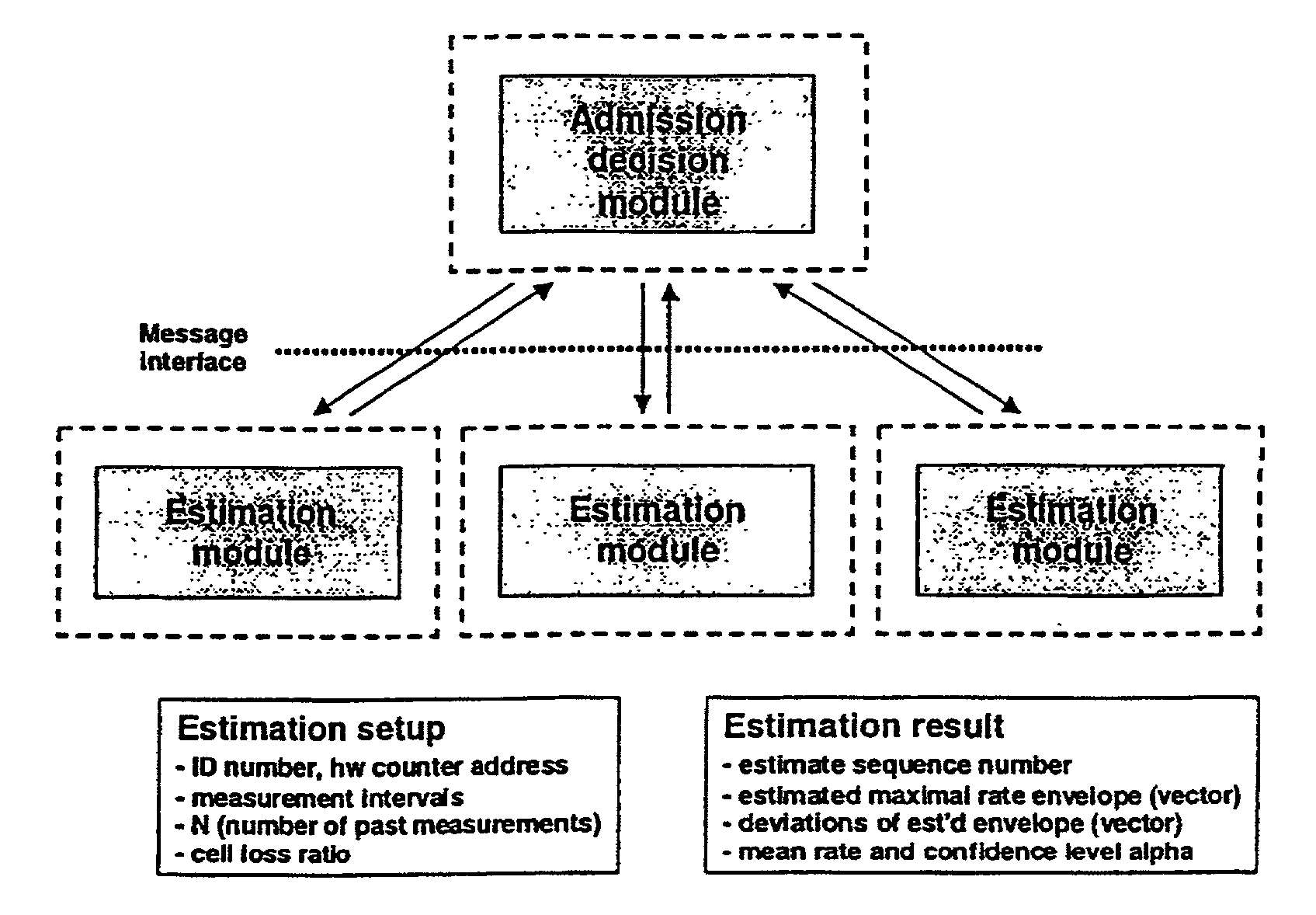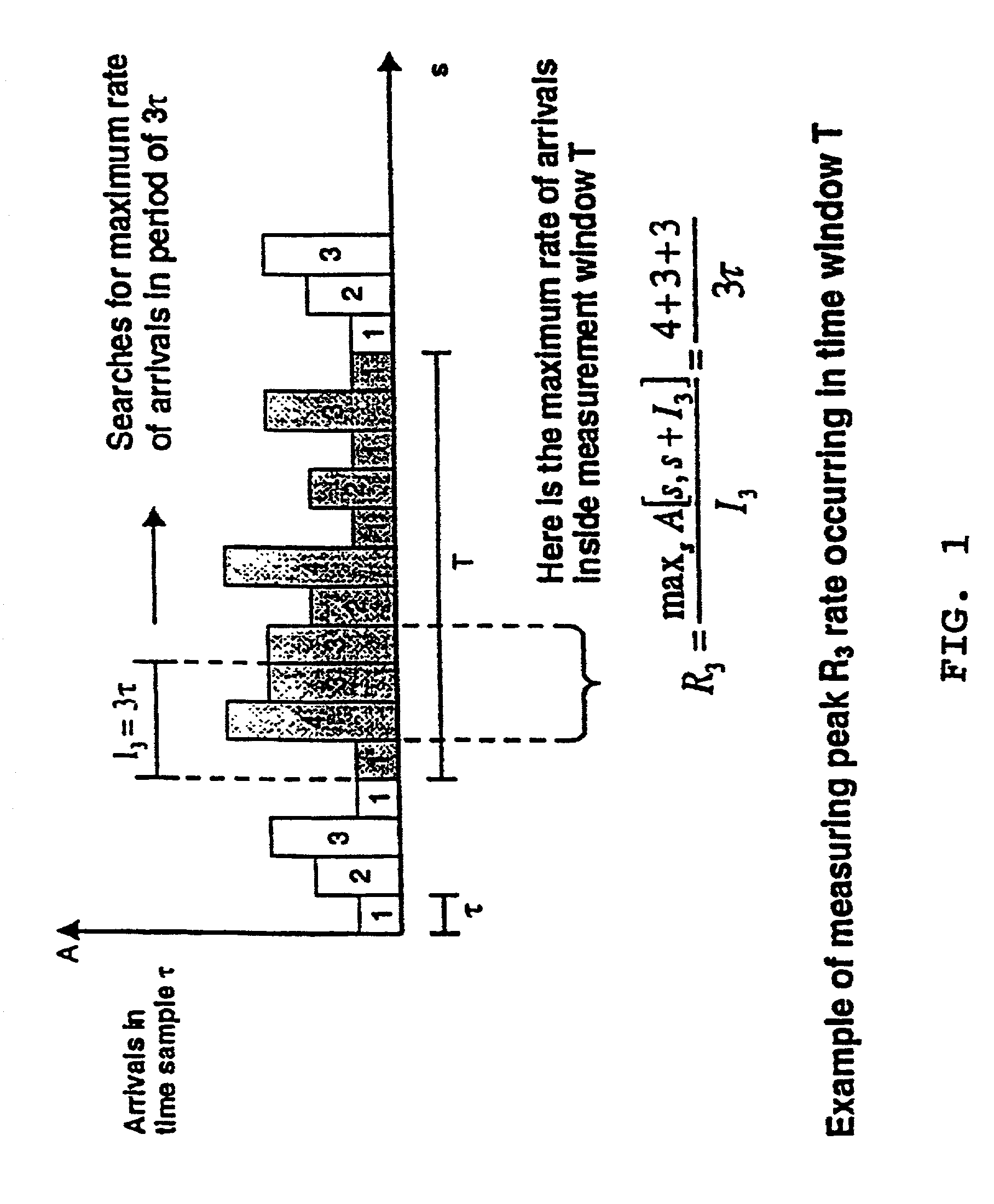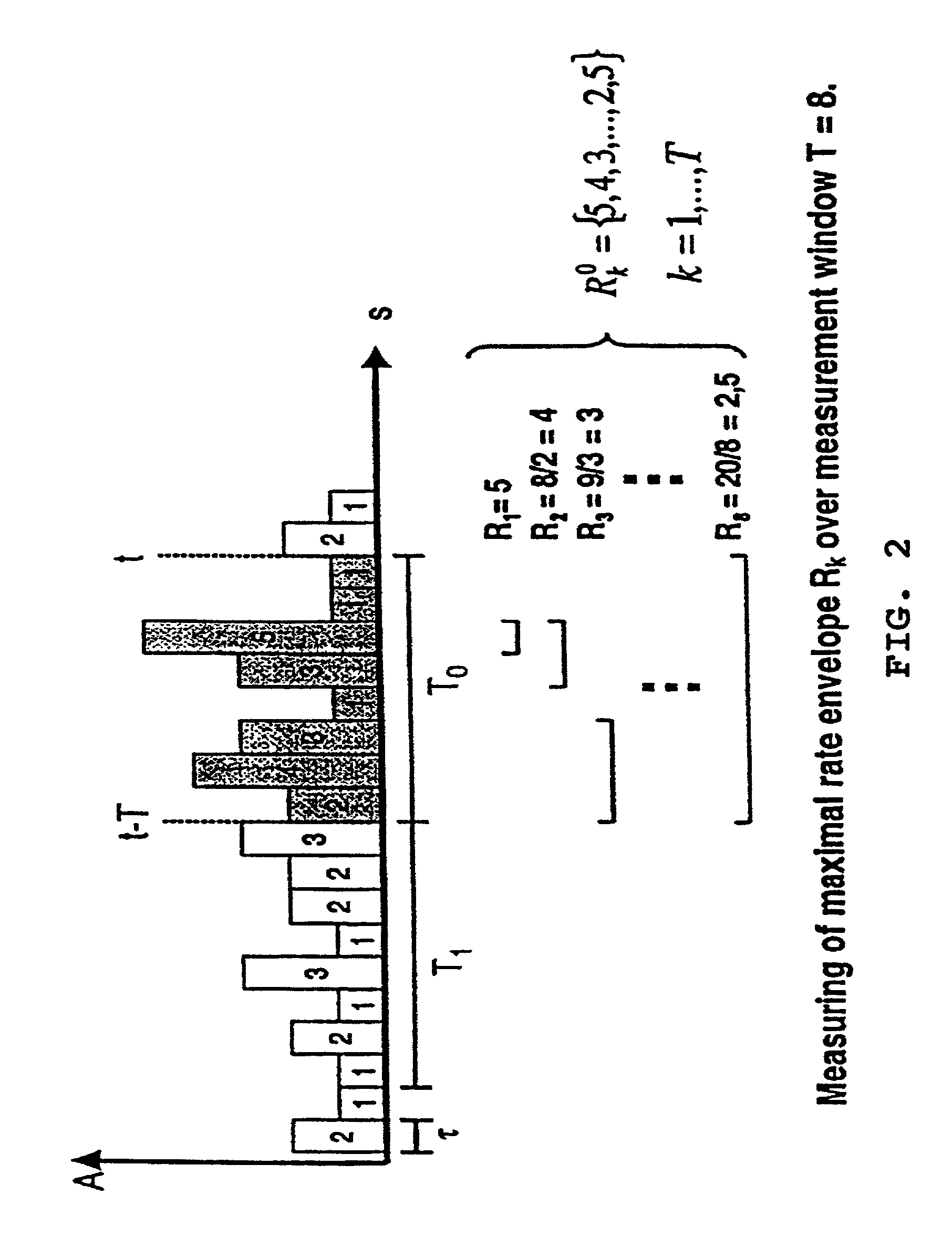Measurement-based connection admission control (MBAC) device for a packet data network
a packet data network and admission control technology, applied in data switching networks, frequency-division multiplexes, instruments, etc., can solve problems such as a statistical risk of congestion, a burst of traffic in a network, and a loss of data, so as to prevent a processor overload and total collapse of performance, and reduce the risk of congestion
- Summary
- Abstract
- Description
- Claims
- Application Information
AI Technical Summary
Benefits of technology
Problems solved by technology
Method used
Image
Examples
Embodiment Construction
[0087]According to the present invention as will be described herein below in greater detail, the present invention implements an MBAC method (either the “original” Qiu's method or a modification of Qiu's method proposed by the present inventor) in a device by dividing the device in different modules, particularly into three modules: measurement module, estimation module and admission control module, and operating these modules in a distributable, stable and effective implementation was developed.
[0088]Also, the invention focuses on a description of the architecture for the measurement and estimation modules. These modules take care of the measurement of current ATM traffic and calculation of estimated maximal rate envelope which is described in later on (according to Qiu's MBAC method). All the modifications use Qiu's original estimated maximal envelopes, so that estimation and measurement modules are common to all methods, i.e. to the original one as well as to modified one's. Esp...
PUM
 Login to View More
Login to View More Abstract
Description
Claims
Application Information
 Login to View More
Login to View More - R&D
- Intellectual Property
- Life Sciences
- Materials
- Tech Scout
- Unparalleled Data Quality
- Higher Quality Content
- 60% Fewer Hallucinations
Browse by: Latest US Patents, China's latest patents, Technical Efficacy Thesaurus, Application Domain, Technology Topic, Popular Technical Reports.
© 2025 PatSnap. All rights reserved.Legal|Privacy policy|Modern Slavery Act Transparency Statement|Sitemap|About US| Contact US: help@patsnap.com



